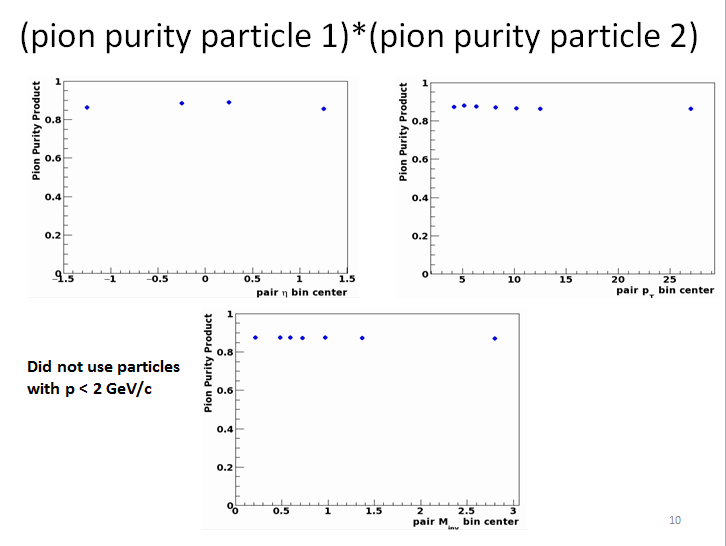Follow-up to pion ID comments
Deviations between the Bichsel expectations and dE/dx peaks:
For the run 11 p+p dataset, Jim has already found these deviations to be small (1-2%). The primary difference between our cuts is my dE/dx hits > 20 cut vs. Jim's > 5. However, the resultant difference in the average path length will have a negligible impact on the estimated deviations between the Bichsel expectations and the dE/dx peaks.
Implementation of pion purity systematic:
Below is slide 10 from Monday's (8/29) presentation, which shows the estimated probability that both particles in a pair are pions. The pion purity is relatively constant at about 87% for each kinematic variable. Applying Jim's dE/dx deviation from above drops the pion purity to about 85%, which gives us a systematic uncertainty for the asymmetry dilution (15%). Recall the asymmetric trigger bias systematic on the previous results (.66*stat. uncertainty). For the paper, the new asymmetric systematic uncertainty bars will be the trigger bias and identified pion systematics added together in quadrature: .68*statistical uncertainty

Is the double band structure seen for dE/dx hits > 5 due to one coming from positive charged particles and the other from negative charged particles?
The double band structure is equally significant for positive and negative charged particles. The attachment below is the nSigmaPion vs nSigmaX plots with dE/dx hits > 5 for positive and negative particles.
- skoby's blog
- Login or register to post comments
